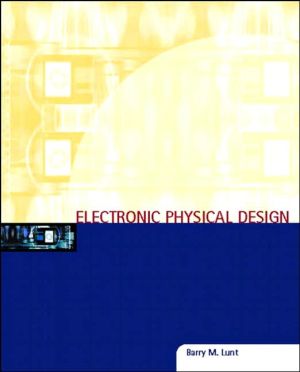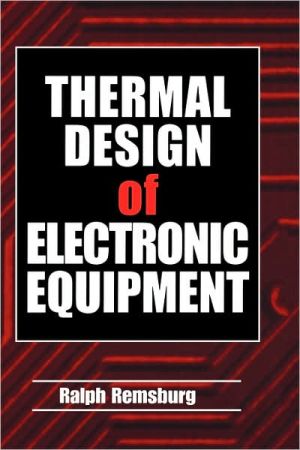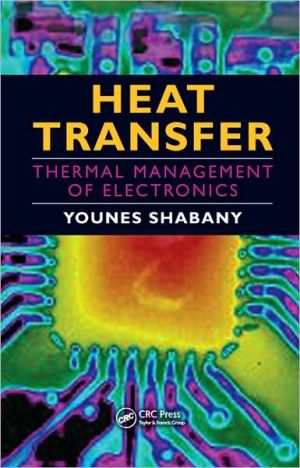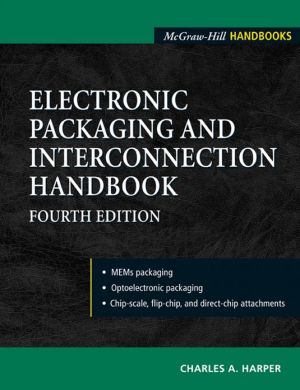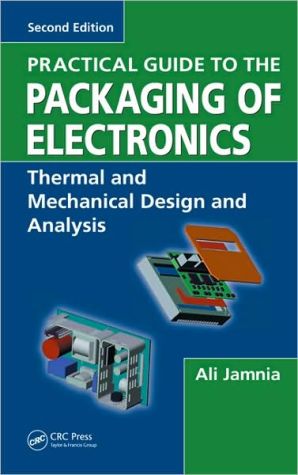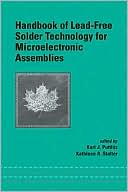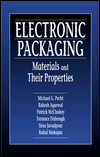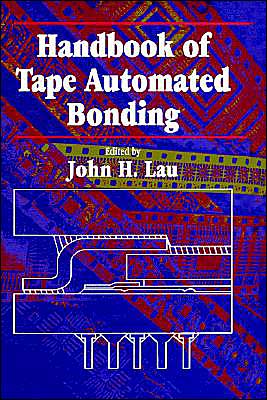Electronic Physical Design
ELECTRONIC PHYSICAL DESIGN is an excellent text for readers learning how to improve the physical design of products. The focus of the book is on how to take a circuit, which has been successfully simulated, from the design stage to the production stage.\ The book uses a unique approach, by using an example of each physical design consideration and applying it to the design of a "boom box:" a portable, personal stereo system complete with radio, tape player, CD player, and speakers. In this...
Search in google:
This book gives professionals clear explanations of the alternatives in common design decision, advantages and disadvantages of the options, tables of characteristics relative to design decision, discussion of alternatives often unknown in practice, and examples of applications.This book addresses the choices to be made at every level of design, including the IC level, the IC package level, and the circuit board level. It then discusses the choices between the many types of resistors, capacitors, connectors, and transistor packages. Finally, this text addresses the concepts involved in building high-quality products, such as robust design, heat vibration, shock, dust, and humidity.For circuit design engineers, circuit-board layout engineers, design engineers, physical design engineers, product engineers, and reliability engineers.
In most electronics design courses, whether academic or professional, the emphasis is on circuit design: choosing the right devices, putting them in the proper arrangement, and completing the operational and diagnostic analysis. Currently, there is no focus on the issues that would have to be addressed if the circuit was built in a permanent fashion; nor an opportunity to deal with the issues relevant to making hundreds or thousands of circuits. This book was written with this need in mind.\ Electronic Physical Design emphasizes the physical aspects, and this emphasis makes this design reference book unique. In this book, you will not find suggestions for designing a phase locked loop, an operational amplifier, or a microcontroller circuit. Instead, you will find details about how to take a circuit that has been successfully simulated or tested in prototype form and actually design a physical prototype suitable for producing one, 100, or tens of thousands of circuits.\ This book uses a unique approach by giving an example of each physical design consideration and applying it to the design of a "boom box": a portable, personal stereo system complete with radio, tape player, CD player, and speakers. By doing this readers can readily grasp the concepts and understand how they would apply to a specific circuit.\ This book is divided into five main sections. Section I sets the stage for the entire text. The Introduction provides a brief overview of the field of electronics and the dramatic advances made over the past century. It also introduces the topic of safety, and lays a solid theoretical and practical foundation for future electrical safety.\ Chapter 1 introduces various factors that must be considered when designing an electronic product. The list of factors is extensive, but by no means exhaustive. Many specialty products will have other factors that must be considered. This chapter also addresses formal documentation of the circuit design.\ Section 11 (Chapters 2-5) focuses on the various types of electronic components available for design, the subtypes of each component, and the physical packages they come in. Chapter 2 discusses the ideal characteristics of IC packages and IC substrate materials and compares their performances. This chapter shows the physical options available and also how to choose among those options.\ Chapter 3 discusses the functions and desirable characteristics of fixed and variable resistors, and summarizes and compares existing resistor types. It will help readers choose the right resistor type for any given application.\ Chapter 4 focuses on capacitors. Many capacitor types exist, and it is often difficult to know which type is preferable for a given application. The material in this chapter should be very helpful in this area.\ Chapter 5 discusses the package types available for discrete diodes and transistors, along with the relative advantages and disadvantages of those package types. The second part of this chapter discusses the basics of connectors: desirable characteristics, available materials, and the relative characteristics of each material. This chapter provides help in choosing the right diode or transistor package, or connector.\ Section III (Chapters 6-8) covers the process through which integrated circuits (ICs) are made. Chapter 6 begins with a short history of ICs, followed by a discussion of the substrates used for making them, and covers photolithography, which is the heart of the IC manufacturing process.\ Chapter 7 covers the many processes used to add materials to the substrates discussed in Chapter 6. Chapter 8 covers the main processes used to remove materials from the substrates. Each process has its advantages and disadvantages, and so each process is used for different applications. Chapter 8 concludes with a discussion on the future of electronic devices.\ Section IV (Chapters 9-12) covers the manufacturing processes through which IC packages, hybrids, multi-chip modules (MCMs), printed wiring boards (PWBs), PWB assemblies, motherboards, and backplanes are made. Chapter 9 covers IC packages, including the three main methods of electrically and mechanically attaching IC chips to the package. Chapter 10 covers the next level of packaging: hybrids, MCMs, and PWBs. It also includes some guidelines for determining conductor width and spacing.\ Chapter 11 covers the field of PWB assemblies, which brings together components discussed in Chapters 3 through 9. Soldering, which is the main method of mechanically and electrically attaching components to PWBs, is also discussed. This chapter also discusses the present challenges in PWB assembly. Chapter 12 discusses the next level of packaging-the motherboard or backplane, both of which interconnect multiple PWB assemblies. An important section on the significance of the design phase when determining the cost of a product concludes the chapter.\ Section V (Chapter 13-19) completes the book by providing insights into the theory and practice of making very high quality electronic products through wise physical design decisions. Chapter 13 addresses the key issues of reliability and quality. Making a prototype of a circuit is difficult, but it is important to know what it takes to make every physical copy of the circuit perform appropriately and continue to do so for the life of the product. This chapter also discusses the elements that make a design robust.\ Chapter 14 and 15 address thermal issues in physical design. Temperature is usually a key factor in physical design considerations. Addressing temperature early in the design process will dramatically aid in resolving thermal issues that could make or break the product. These chapters also address the physical impact of heat, how to remove it, and how to calculate device temperatures.\ Chapters 16, 17, and 18 help readers design for vibration, shock, humidity, and dust. These are areas typically not considered by electronic designers, but careful attention to these issues will result in a much better product.\ Chapter 19 provides a brief introduction into the field of electromagnetic compatibility and explains what a "green" product is. It looks ahead to several areas of electronic devices and provides an overall conclusion.\ I hope that by pulling all these materials together into a single reference book, designers will be able to use it to improve the physical design of their products. This book is the outgrowth of several years of teaching a university level course on electronic design, and is intended to serve both the academic community and the world of practicing professionals.
SECTION I. SETTING THE STAGE. Introduction. 1. Design Decisions and Documentation. SECTION II. ELECTRONIC COMPONENTS. 2. Electronic Components and Packaging Levels. 3. Fixed and Variable Resistors. 4. Fixed and Variable Capacitors. 5. Discrete Transistors and Diodes; Connectors. SECTION III. HOW INTEGRATED CIRCUITS ARE MADE. 6. History, Substrates and Patterning. 7. Adding Materials. 8. Removing Materials; Future Devices. SECTION IV. ELECTRONIC MANUFACTORING PROCESSES AND MATERIALS. 9. Integrated Circuit Packages: Process and Materials. 10. Hybrids, MCMs, and PWBs. 11. PWB Assemblies (Level 2) 12. Motherboards and Backplanes. SECTION V. PHYSICAL DESIGN ISSUES. 13. Reliability. 14. Thermal Design Considerations. 15. Temperature Difference Considerations. 16. Designing for Vibration and Shock. 17. Dealing with Humidity. 18. Dealing with Dust. 19. Miscellaneous Considerations and Conclusion. Glossary. Index.
